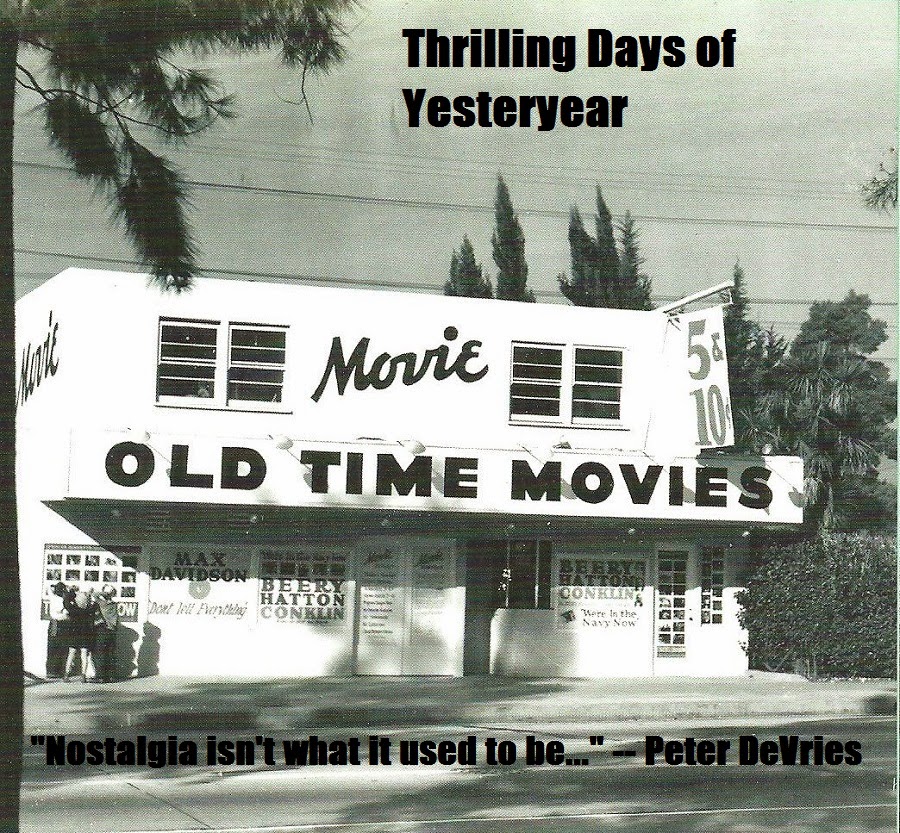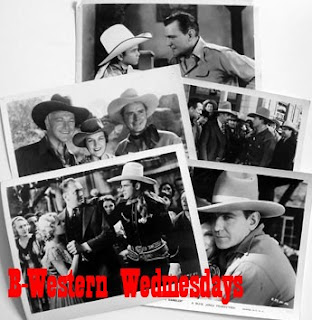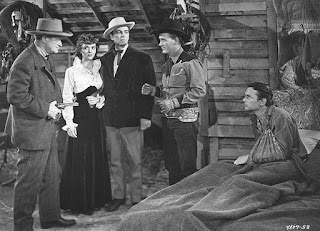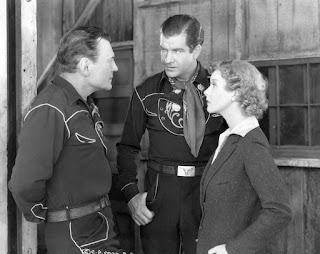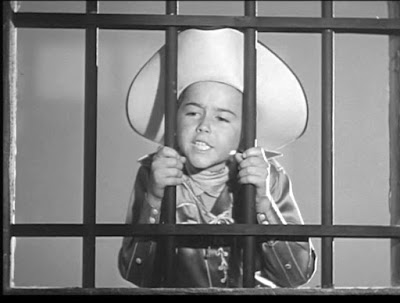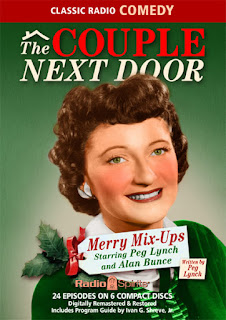On this week’s edition of
Forgotten Noir Fridays,
we return to the titular environs of San Francisco private investigator Dennis “Denny”
O’Brien (Hugh Beaumont), who puts groceries on the table with a boat rental
business when he’s not out shamusing.
(I’ve
seen two of these movies so far—the first being the previously discussed
Danger
Zone [1951]—and I’ve yet to see
anyone
inquire about renting a boat.)
O’Brien’s
first client is kindly Father Donovan (Raymond Greenleaf), a priest who hires
Denny (I think O’Brien does this one
pro
bono, since men of the cloth rarely have any spare change rattling around
in their cassocks) to intercept one Joe Harmon (Chris Drake), who’s planning to
crash out of “The Rock” later that evening.
(How Harmon endures that lengthy swim goes unexplained, as you might
have already guessed.)
If Father Donovan
can sit Joe down for a chinwag, he can convince that little lost lamb to return
to the incarcerated flock and stay on the straight-and-narrow.
O’Brien meets Harmon at a predestined spot, and the escaped
con says he’ll palaver with the good Fadduh once he’s made a stop at an address…where
the two men meet up with Joe’s sister Ann (Ann Savage).
Ann introduces Denny’s noggin to the business
end of a heavy bit of bric-a-brac, and when our hero comes to…Joe is dead from
multiple stab wounds.
The plot thickens
when O’Brien learns from Father Donovan that the man he met is not Joe Harmon—but
a fellow inmate named Mike Greely!
After O’Brien wraps up the Harmon affair (in less than a
half-hour—damn, he’s good) he’s then hired by wrestling referee Mushy Cavelli
(Johnny Indrisano) to play courier and pick up an envelope containing mucho dinero after a scheduled bout
between grapplers Willie Klingle (Bill Varga) and Ape Danowski (Mike
Mazurki). (Kind of a crappy thing to do
to a kid, naming him “Ape.”) Klingle
dies of a heart attack during the match, and Denny is pressed into service to
investigate as to why Willie would ever be cleared to climb into the ring when everyone knew the guy had a bum ticker.
 |
| "He don't bounce no more." TDOY fave Mike Mazurki gets gumshoe Hugh Beaumont in a headlock as ubiquitous Lippert starlet Margia Dean looks on. |
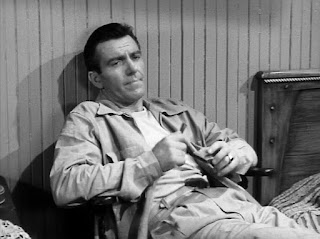
In the review I wrote for
Danger Zone, I mentioned that it,
Pier 23, and
Roaring City
(1951) all consisted of non-telecast episodes from a syndicated TV series based
on the Jack Webb radio shows
Pat
Novak…For Hire and
Johnny Madero, Pier 23.
(
Pier
23 is the third “Denny O’Brien” entry—someone at VCI apparently issued
these “co-hits” on their
Forgotten Noir DVD releases out of
sequence.
Roaring City will be covered in this space in future.)
Hugh Beaumont couldn’t carry Webb’s jockstrap
on any given day of the week, but if you’re willing to overlook this handicap you
might get a little enjoyment out of
Pier
23.
(
Andrew “Grover”
Leal pointed out to me on Facebook the other night that I had once written Beaumont
played “TV’s saddest excuse for a father on
Leave it to Beaver” in
an
installment of TDOY’s Crime Does Not Pay series [1940’s
You, the People].
I didn’t remember being
that harsh—and in my defense, Mr. Grover recalled me saying
Beaumont was the
worst TV dad, which
was not quite the way I worded it—but the evidence clearly shows that I voiced
a negative opinion of the legendary boob tube pop, and so I have no other
recourse but to own it.
For the record,
I don’t think Ward Cleaver was the
worst—at
least not while
Mayberry RFD’s Sam Jones is in this contest—but Ward’s
reputation as a wise patriarchal sage has been embarrassingly inflated over the
years.
On a slightly related note, the
Crime Does Not Pay efforts will
resurface on the blog sometime next year…because I was
finally able to obtain that Warner Archive MOD DVD set.
More on this as it develops.)
The chief asset of these movies is the presence of character
great Ed Brophy as Professor Frederick Simpson Schicker (the movie version of
Pat Novak’s “Jocko Madigan”), who gets
the lion’s share of the best dialogue.
(When O’Brien asks his pal “You gonna stay drunk
all your life?” Schick responds “It's all a matter of
will power...I'm probably the only man
in the world who intends to carry a hangover into
eternity...")
Having
Mazurki on hand is another check in the “plus” column (Mike kind of combines
his characterizations of Moose Malloy from
Murder,
My Sweet and The Strangler from
Night
and the City for the Ape), and the movie’s noir bona fides get an
assist by casting Ann Savage as a cold-blooded dame in the first of the two
stories.
(We all have our favorite femme
fatales in noir, but Savage is the probably the only one who could rip out the
hero’s heart and munch on it like an apple.)
The supporting cast is filled out with most of the familiar Lippert faces:
Richard Travis (as Lt. Bruger), Margia Dean, David Bruce, Raymond Greenleaf,
Harry Hayden, etc.
Joi (billed as Joy)
Lansing has a brief bit as a cocktail waitress, and the first actor to play “Runt”
in the Chester Morris
Boston Blackie film franchise,
Charles Wagenheim, can be glimpsed as a “policy man.”
 |
| When they say "Spartan"...they ain't just whistlin' Dixie. |
Lou Morheim and Herbert Margolis, who scripted many a
Johnny
Madero broadcast, receive story credit on
Pier 23 (since most of the
Madero episodes are lost to the
ravages of time and neglect, I can’t confirm whether or not they recycled these
plots from the radio show…though I suspect they probably did) with screenplay
honors going to Julian Harmon and Victor West (the dialogue is prime
Novak: “The pier was as deserted as a
warm bottle of beer…”).
B-picture
journeyman William A. Berke sat in the director’s chair on this one, and if you’re
curious to have a look you can rent
Pier
23 on
Forgotten Noir Volume 9 at
a ClassicFlix near you.
(Next week:
the last of
Volume 9’s “co-hits,” 1947’s
The Case of the Baby Sitter.)
